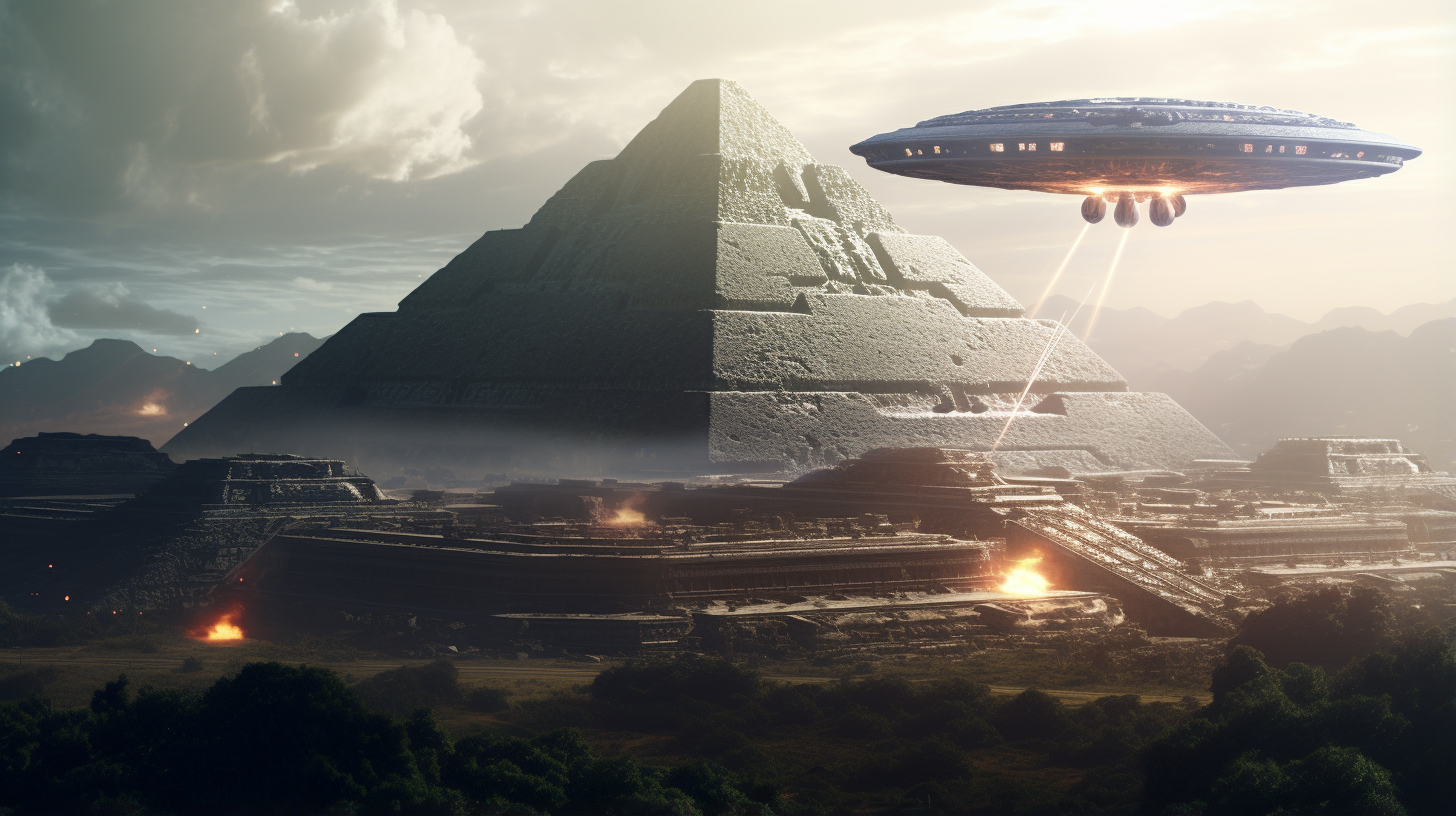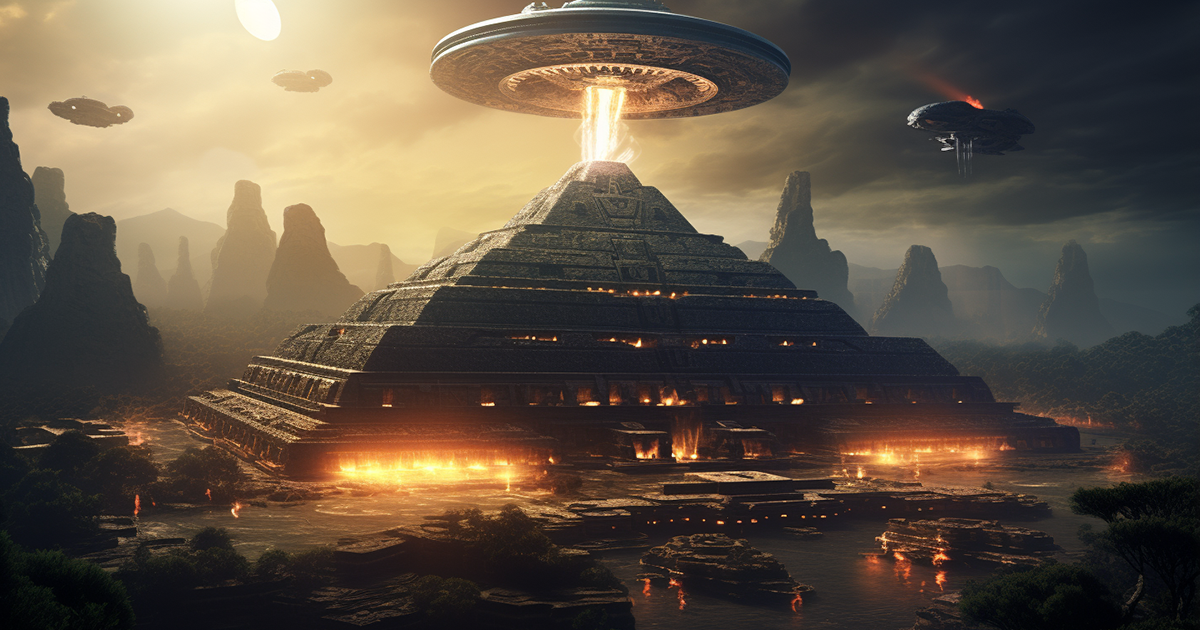The ancient world has always held a profound fascination for us, offering glimpses into the mysteries of civilizations long gone. Among these wonders are the awe-inspiring pyramids of Teotihuacan and Chichen Itza, which stand as testament to the ingenuity of their builders.
While we often associate these pyramids with the civilizations that constructed them, there’s an intriguing perspective that suggests a connection between these structures and something beyond our terrestrial understanding.
Teotihuacan, dating back to at least the first century A.D., was once the largest city in Mesoamerica, boasting a population of 125,000 people. Among its sacred temples, the Temple of the Feathered Serpent stands as an imposing step pyramid dedicated to the god Quetzalcoatl.
This deity, associated with creation and rain, held immense significance in Aztec culture. Interestingly, Quetzalcoatl wasn’t limited to Mesoamerica but also made appearances in Mayan lore, known as Kukulkan.

The Pyramid of Kukulkan at Chichen Itza, approximately 900 miles east of Teotihuacan, is another awe-inspiring structure. What makes it even more intriguing is its alignment with celestial events.
Every year on the 23rd of March, as the sun rises, light and shadows form triangular patterns on the pyramid’s stairway. This phenomenon culminates on the 21st of September when only light and shadow create the image of Kukulkan descending. It’s as if the pyramid itself becomes a celestial event marker.
This alignment has led some to ponder whether the pyramid’s purpose goes beyond mere worship. Could it be that this structure was designed to commemorate an extraterrestrial visitation, with the light and shadow effects mirroring an original extraterrestrial landing?
The connection doesn’t end there. In Greece, on the island of Evia, there are mysterious megalithic structures known as “dragon houses.” The primary dragon house is perched atop Mount Ohi and comes with its own intriguing legend.

According to local lore, Zeus descended from the heavens on this very mountain. The term “dragon” in ancient Greece was used not only for flying monsters but also for beings with superhuman powers.
The dragon house’s elevation, the massive megalithic blocks it contains, and its unique location all defy conventional explanations. Could it be that these structures were built as landing spots for celestial visitors? Could Zeus’s descent have involved more than mythological symbolism?
When we piece together these elements, a fascinating narrative unfolds. The pyramids and dragon houses may not solely represent religious or cultural monuments but could be markers of cosmic contact.
The idea of ancient astronauts visiting Earth and imparting knowledge to our ancestors becomes a compelling theory when considering these structures’ intricate designs and celestial alignments.
Video:
While we may never fully unlock the secrets of our ancient past, it’s undeniable that the connection between these structures and the cosmos invites us to explore the possibility of extraterrestrial influence. The mysteries of the past continue to captivate our imaginations and challenge our understanding of the world we inhabit.

18 thoughts on “The Intriguing Connection Between Ancient Pyramids and Cosmic Influence”
Comments are closed.